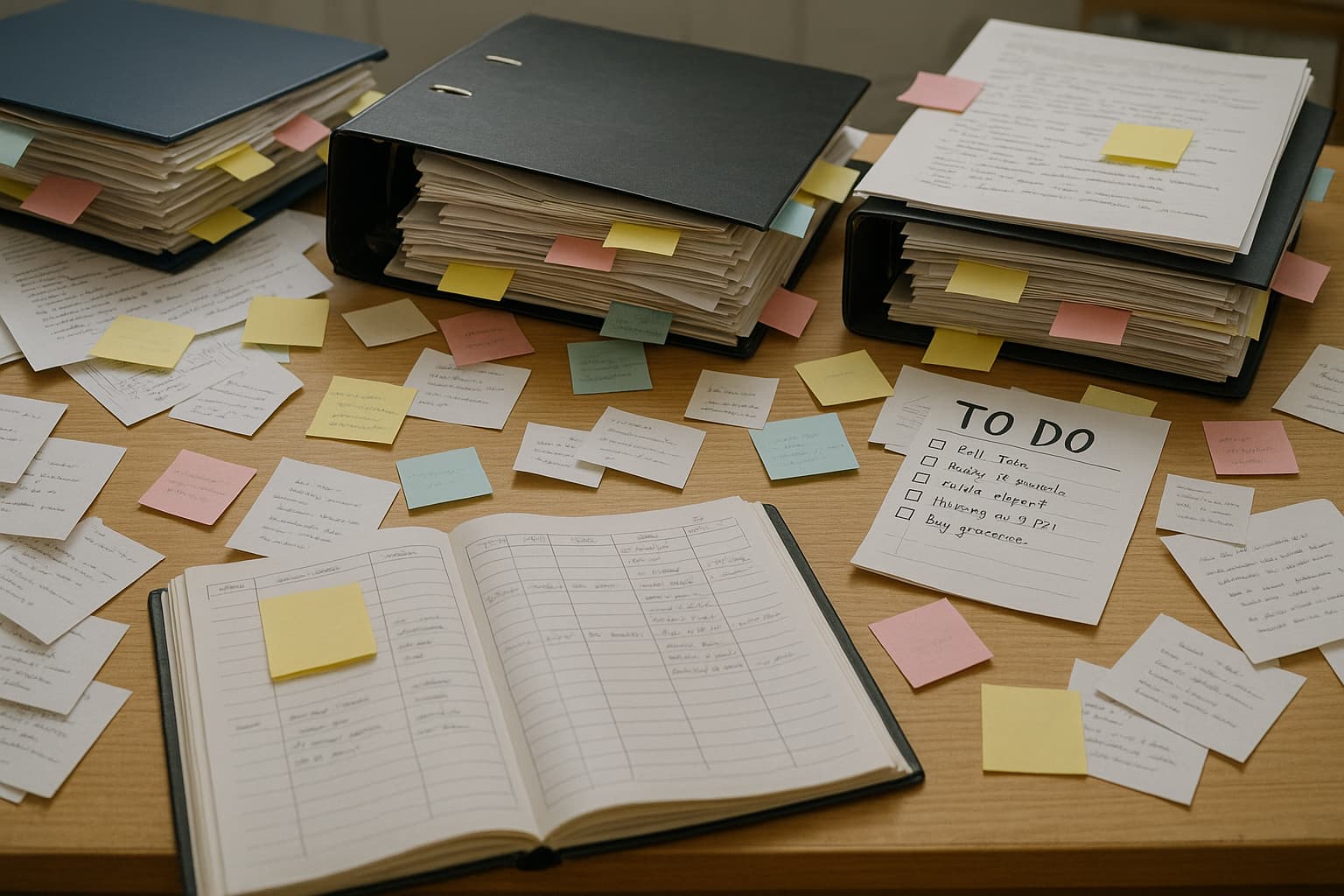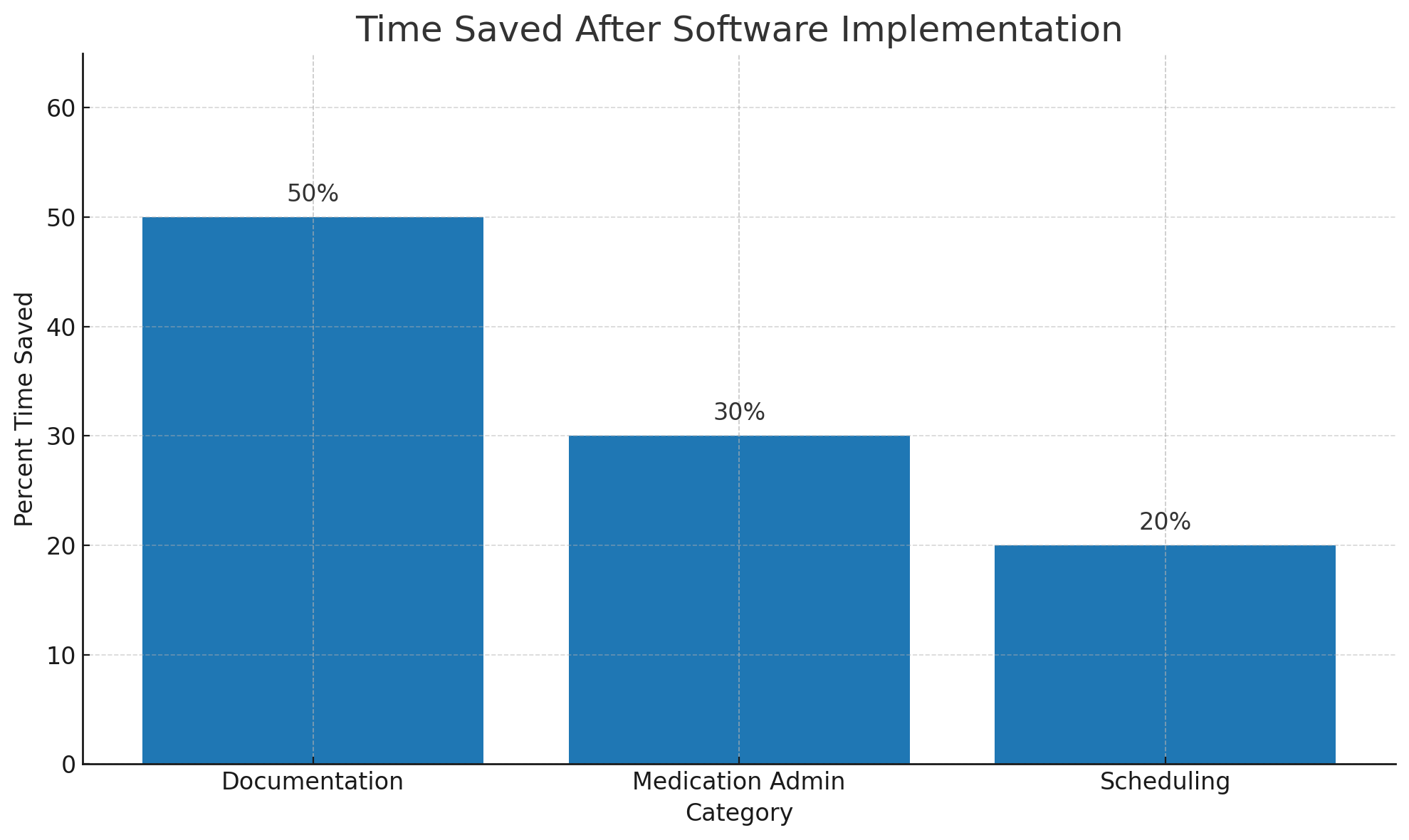Reclaiming time: the untapped resource unlocked by care software in elderly homes
In the bustling environment of an elderly care home, time is a precious commodity.

Every minute counts when delivering quality care, managing complex schedules, and ensuring the well-being of residents. For too long, the demands of administration—the endless paperwork, manual data entry, and fragmented communication—have eaten into this valuable resource, diverting caregivers from their primary mission: providing compassionate, person-centered care.
But what if there was a way to reclaim those lost hours? What if technology could unburden staff, allowing them to focus more on residents and less on tedious tasks? This isn't a futuristic dream; it's the tangible reality offered by modern care management software, proving that the shift from manual to digital processes is not just about efficiency, but about liberating the most valuable asset in any care home: time.
The Time Sink: Where Do the Hours Go?
 Before the advent of specialized software, a significant portion of a caregiver's day was consumed by administrative overhead. Consider the typical routine:
Before the advent of specialized software, a significant portion of a caregiver's day was consumed by administrative overhead. Consider the typical routine:
Charting & Documentation: Manually filling out paper charts, writing notes on resident behavior, vitals, and activities. This can be repetitive and time-consuming, especially when needing to duplicate information across different forms.
Medication Management: Physically signing off on each medication administration, checking drug charts, and transcribing doctor's orders.
Communication & Handover: Writing detailed handover notes for the next shift, making phone calls to supervisors or family members, and chasing information scattered across various files.
Scheduling & Roster Management: Manual creation and adjustment of staff rosters, tracking leave, and managing shift swaps, often using cumbersome spreadsheets.
Incident Reporting: Filling out lengthy paper forms for any incidents, big or small, and ensuring they are filed correctly.
"It felt like we were always playing catch-up," recalls John Davies, a veteran caregiver with 15 years of experience. "Every time I had to sit down and do paperwork, it was time I wasn't spending with residents. I'd rush through notes just to get back to them."
Quantifying the Gains: Where Software Delivers Time Savings
 While the exact figures vary by facility size and existing processes, numerous case studies and industry analyses consistently demonstrate significant time savings. Here's how care software reclaims those precious hours:
While the exact figures vary by facility size and existing processes, numerous case studies and industry analyses consistently demonstrate significant time savings. Here's how care software reclaims those precious hours:
Documentation & Charting (Up to 50% Reduction):
Real-time entry: Caregivers can input data directly at the point of care using a tablet or mobile device.
Pre-populated fields & templates: Common observations or tasks can be selected from dropdown menus or quick templates, eliminating repetitive writing.
Automated timestamps: All entries are automatically time-stamped, ensuring accuracy and accountability without manual effort.
Instant access: All resident data is centralized and instantly accessible, eliminating time spent searching for files.
Communication & Handovers (Significant Time & Accuracy Gains):
Digital handovers: Key information from the previous shift is consolidated and instantly available, reducing lengthy verbal handovers.
Internal messaging: Secure messaging systems allow quick communication between staff, supervisors, and even integrated communication with families.
Shared dashboards: All relevant staff can view the same real-time information, improving coordination and reducing duplicate inquiries.
Scheduling & Roster Management (Hours Saved per Week/Month):
Simplified rostering: Software can simplify staff schedule entry based on resident needs, staff availability, and certifications, reducing the manual effort.
Incident Reporting (Streamlined Process):
Guided forms: Digital forms guide staff through the necessary information, ensuring all critical details are captured efficiently.
Automated notifications: Supervisors or relevant personnel are automatically alerted to new incidents, speeding up response times.
The Tangible Benefits: More Than Just Minutes
 The time saved by care software isn't just a number on a spreadsheet; it translates into profound qualitative improvements:
The time saved by care software isn't just a number on a spreadsheet; it translates into profound qualitative improvements:
Enhanced Resident Engagement: With less paperwork, caregivers have more time to interact meaningfully with residents, engage in activities, listen to their stories, and provide truly person-centered care. This significantly improves resident well-being and quality of life.
Reduced Staff Burnout: Less administrative burden means less stress and frustration for caregivers, leading to higher job satisfaction and improved staff retention.
Improved Accuracy & Safety: Less hurried documentation means fewer errors, especially critical in medication management and incident reporting, directly contributing to resident safety.
Better Data for Decision-Making: More accurate and real-time data allows management to identify trends, optimize staffing, and make informed decisions that enhance the overall quality of care.
Increased Compliance: Automated record-keeping and comprehensive audit trails make regulatory compliance significantly easier and less time-consuming.
Ultimately, investing in care software is an investment in time—time that can be reinvested directly into the heart of the care home: the residents and the dedicated staff who serve them. It's a strategic move that moves beyond mere efficiency, transforming operations to foster a more caring, responsive, and humane environment for everyone involved.
